Agar Agar Jelly is delicately sweet and flavoured with coconut and pandan essence. Made with only 5 ingredients, including agar agar powder instead of gelatin, it’s naturally vegan friendly.
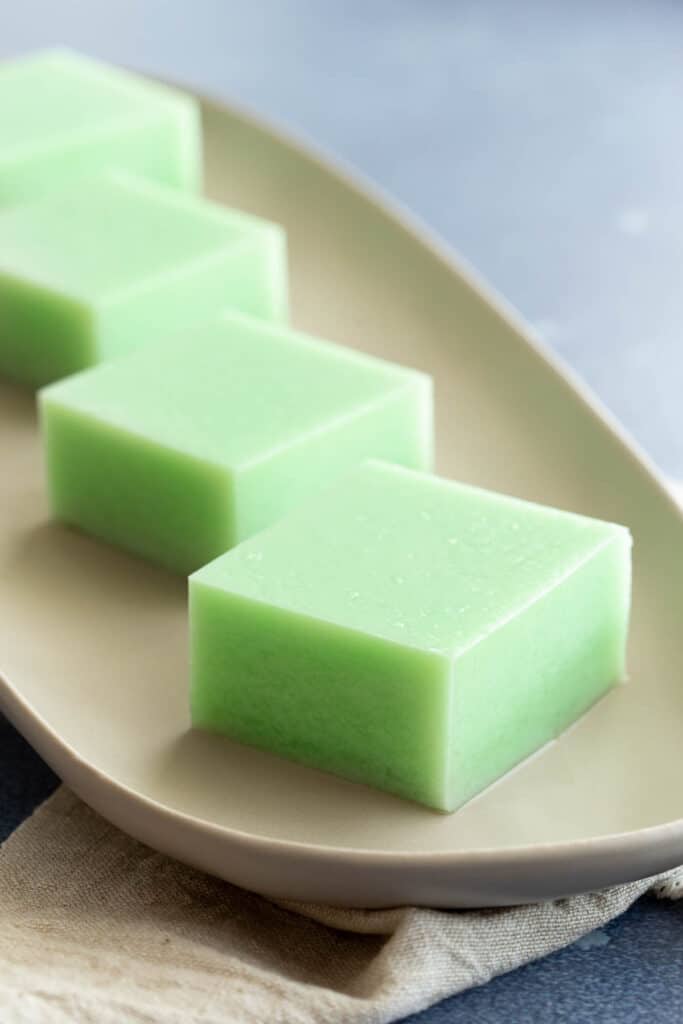
Why We Love This
Slice into squares for a delicious dessert or portable snack. These delicious jelly bites are like a simplified jelly slice without the biscuit layer.
Not only do they have a delicate sweet and salty coconut flavour, their texture is so different to regular jelly / jello.
Related: Indonesian Serabi Kuah Pancakes / Malaysian Seri Muka Layer Cakes
Agar Agar Jelly vs Gelatin Jelly
Most store bought jelly / jello is made from gelatin, an animal based product. Whereas Agar Agar jelly is a popular Asian plant based jelly / jello, also known as kanten.
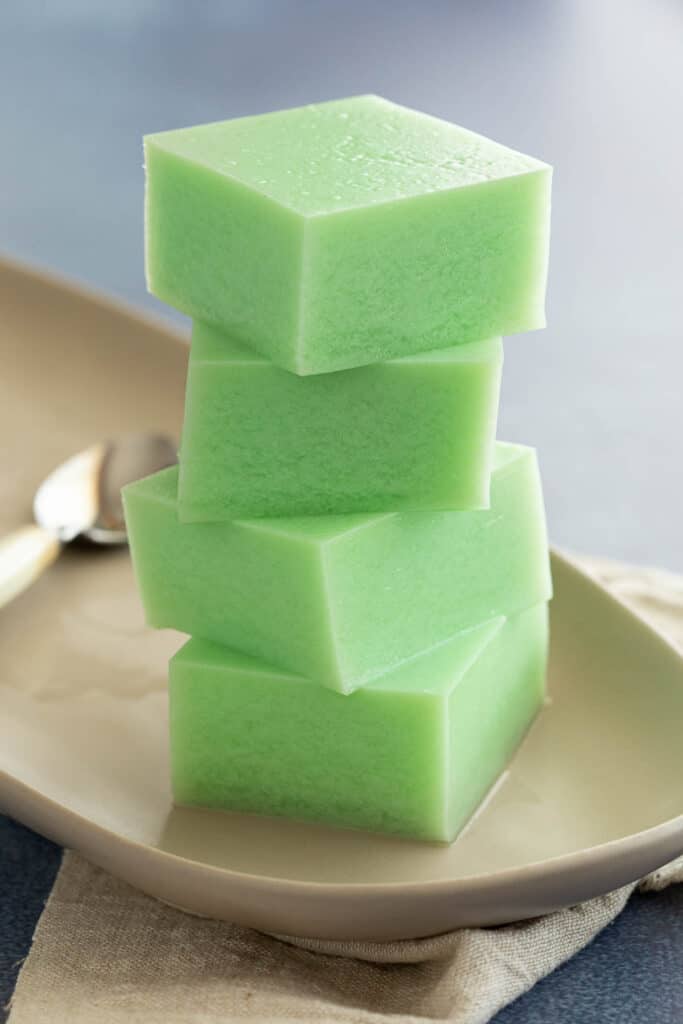
What is Agar Agar Jelly / Jello?
Known as Vun in Laos, this is a sweet jelly dessert often flavoured with coconut and pandan.
Agar agar jelly sets more firmly than jelly made with gelatin, and will even set at room temperature – although it should still be stored in the fridge after. Agar is naturally packed with fibre, yet surprisingly has zero carbs, calories, sugar or fat (talk about guilt free!).
What You’ll Need
- Agar Agar Powder – We love using the Thai telephone or trophy brands of agar as you can use exactly half a 25g packet for this recipe (or just make a double batch). If you prefer, you can substitute with the same amount of gelatin (not vegan). Just remember, you’ll need to set the jelly in the fridge as it won’t set at room temperature. If using agar agar flakes instead of powder, use the conversion ratio of 1 tbsp powder to 2 tbsp flakes.
- Coconut Milk – We use canned coconut milk with at least 60% coconut extract. Avoid sweetened coconut milk, just use regular plain coconut milk so you are always in control of the sweetness. For a stronger coconut flavour, use coconut cream instead.
- Sugar – Any sugar will work for this! If you’d like a more caramel tone, use brown sugar or palm sugar. Note that it will change the colour of the jelly if you use a darker sugar.
- Pandan Flavouring – We use the popular pasta pandan flavouring. It stores well, and is easy to find at Asian supermarkets or online. It’s a surprisingly versatile little ingredient which you can use for other sweet Asian treats like Klepon (Coconut Rice Cakes) and Dadar Gulung (Rolled Pancakes), or even savoury dishes like Thai Pandan Chicken. If you don’t have any pandan flavouring on hand, you can make your own pandan extract or substitute with regular vanilla essence.
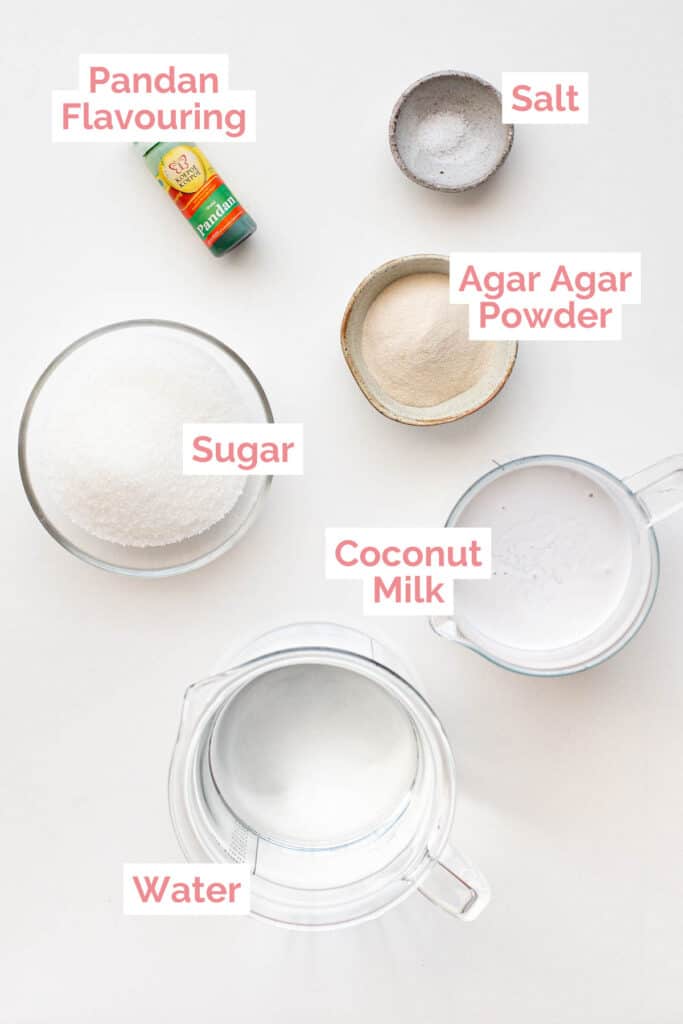
How to make Coconut and Pandan Jelly:
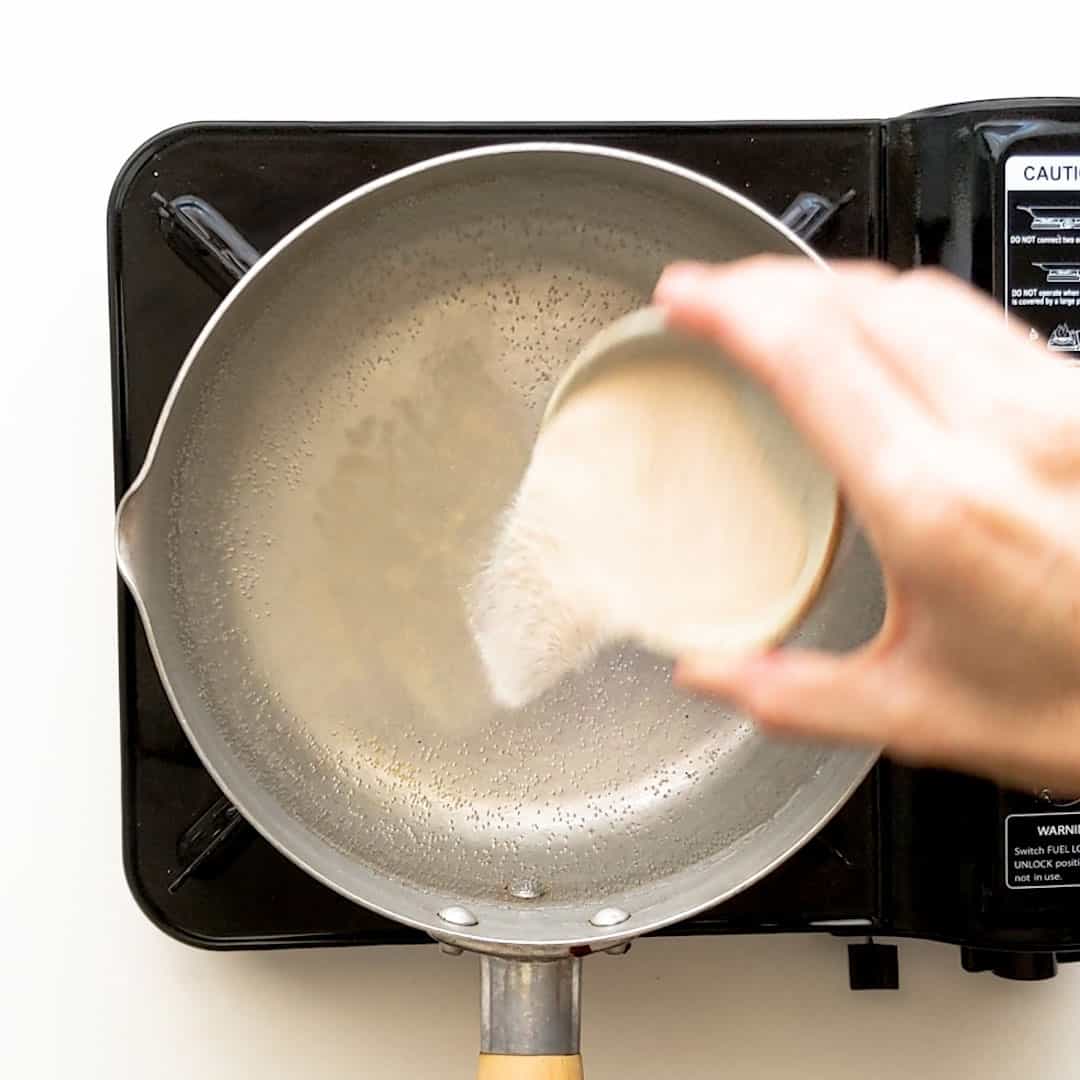
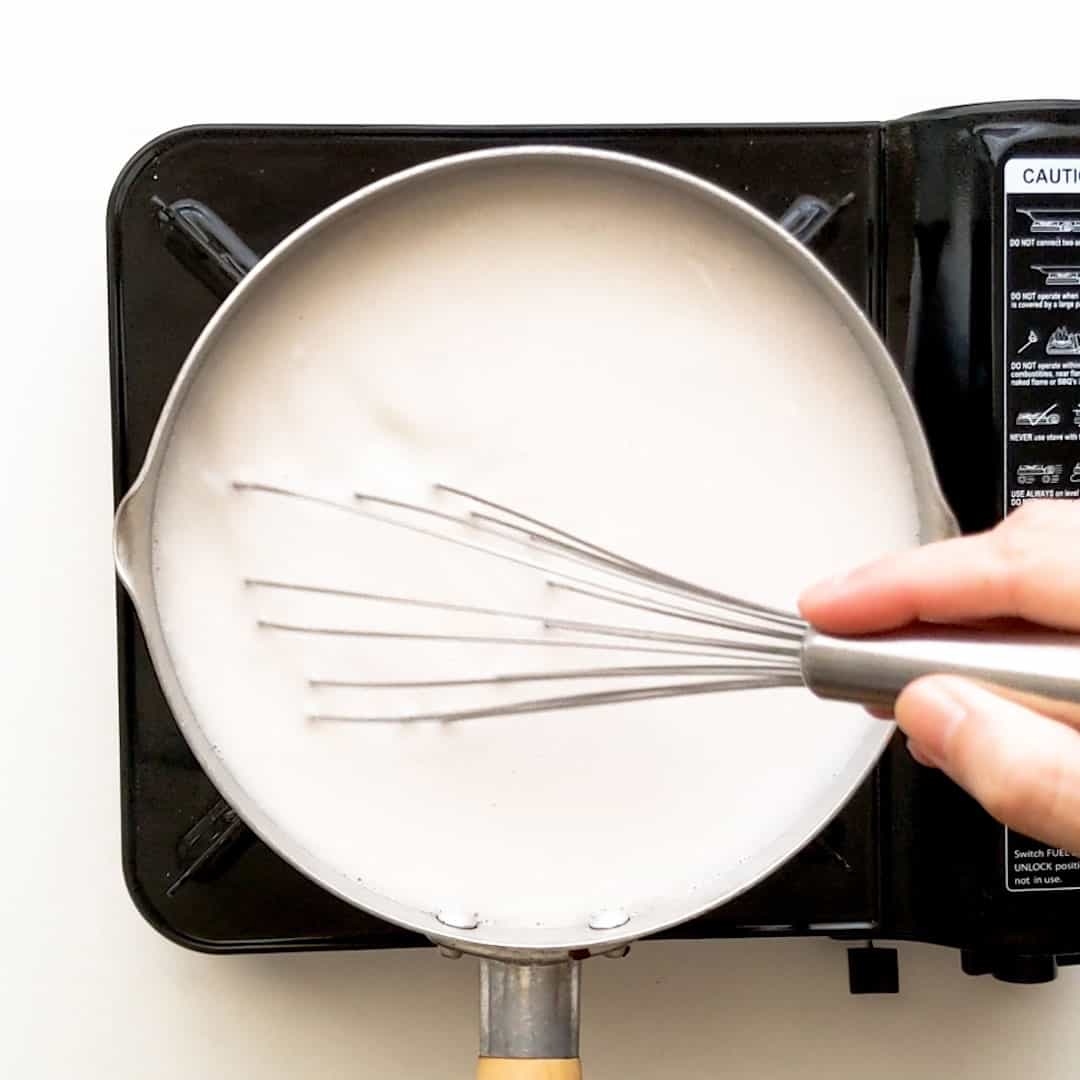
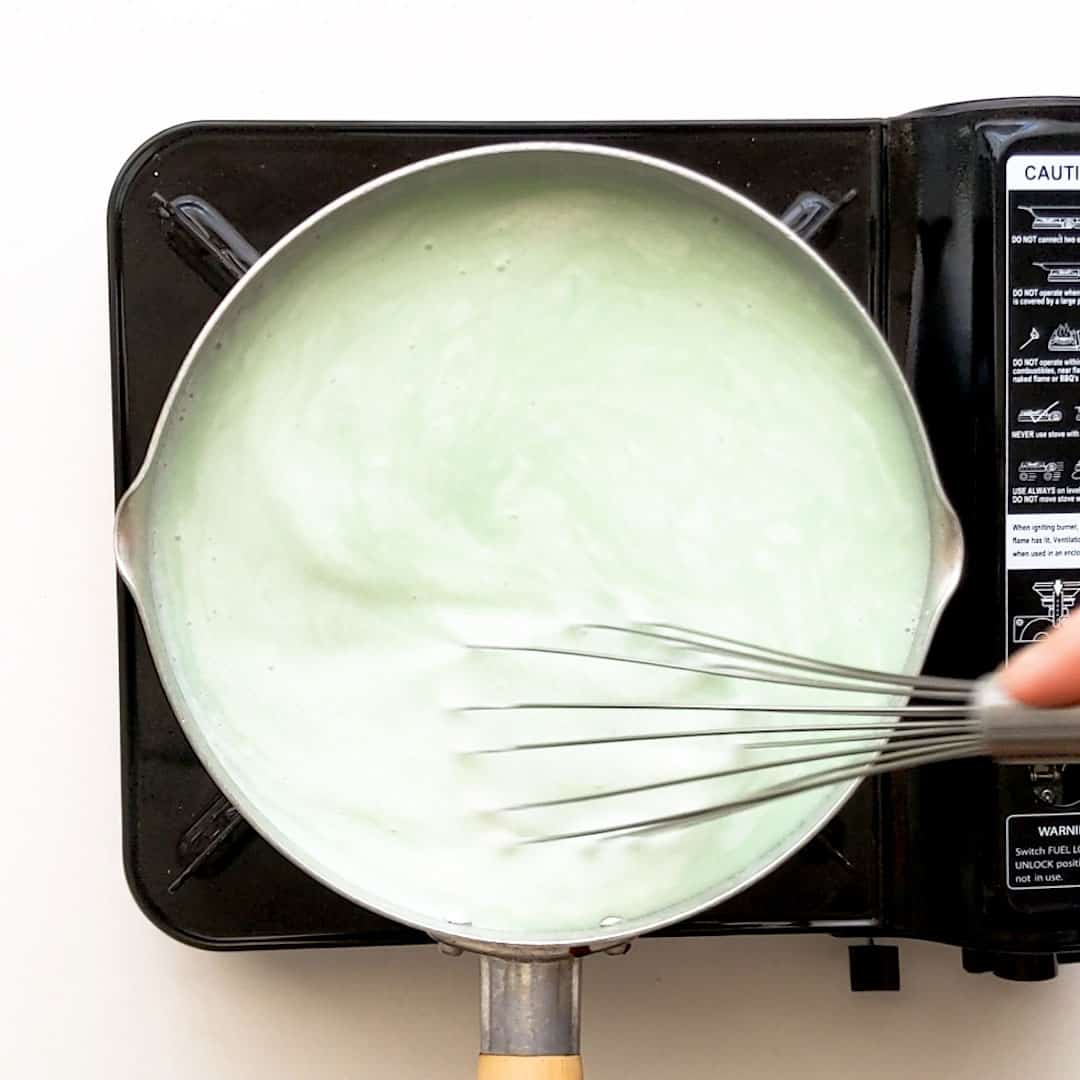
- Heat the water in a large saucepan over medium heat until small bubbles start to form. Add the agar agar and give it a swirl to mix through and dissolve.
- Slowly pour in half the coconut milk and stir. Gently bring to the boil and keep stirring. Then slowly add your remaining coconut milk.
- Next, add in the sugar, salt and pandan flavouring. Taste the mixture, but be careful not to burn your tongue! If it’s not sweet enough, you can add more sugar, an extra sprinkle of salt or pandan essence until you’re happy with the flavour.
- Cook and stir for a few more minutes, then remove from the heat.
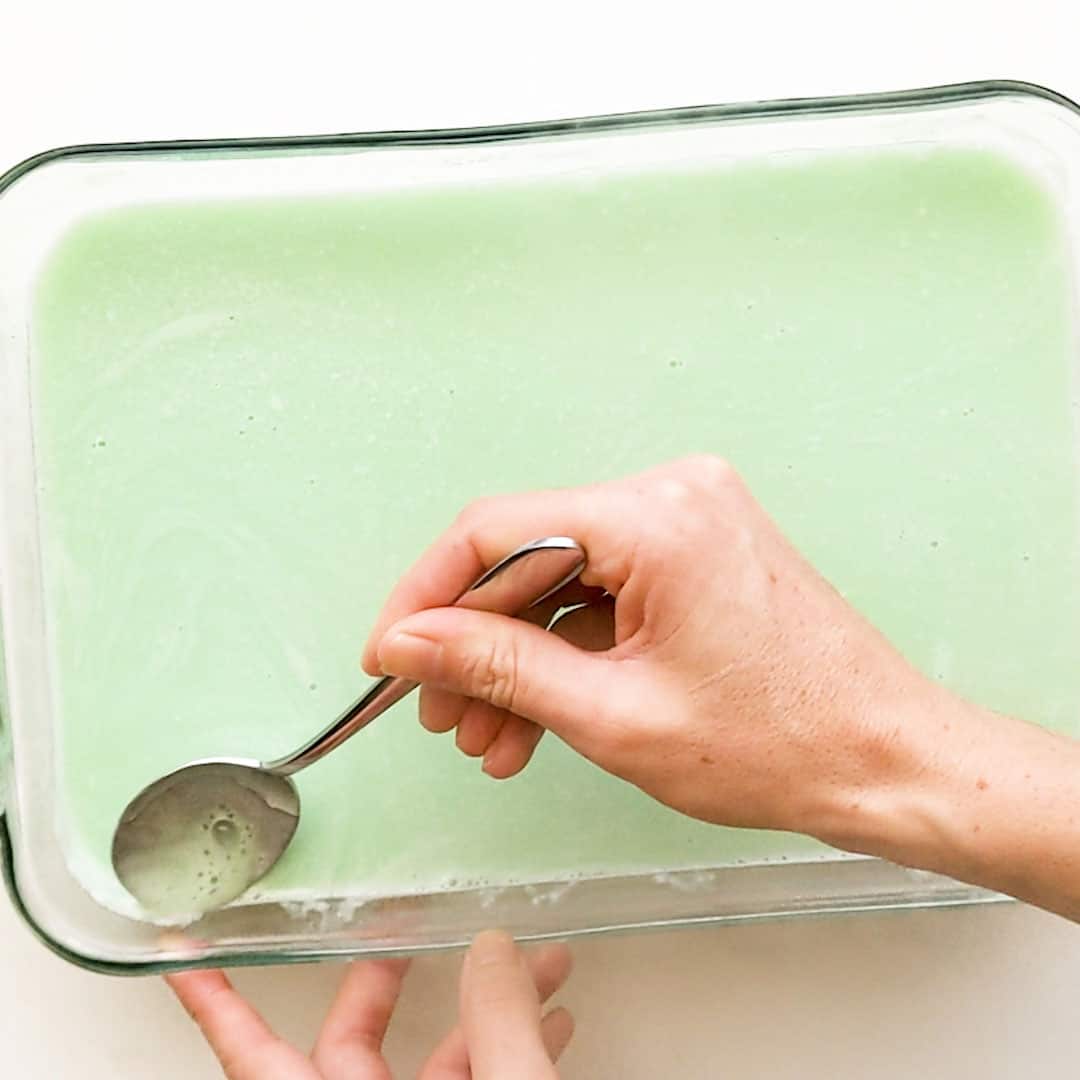
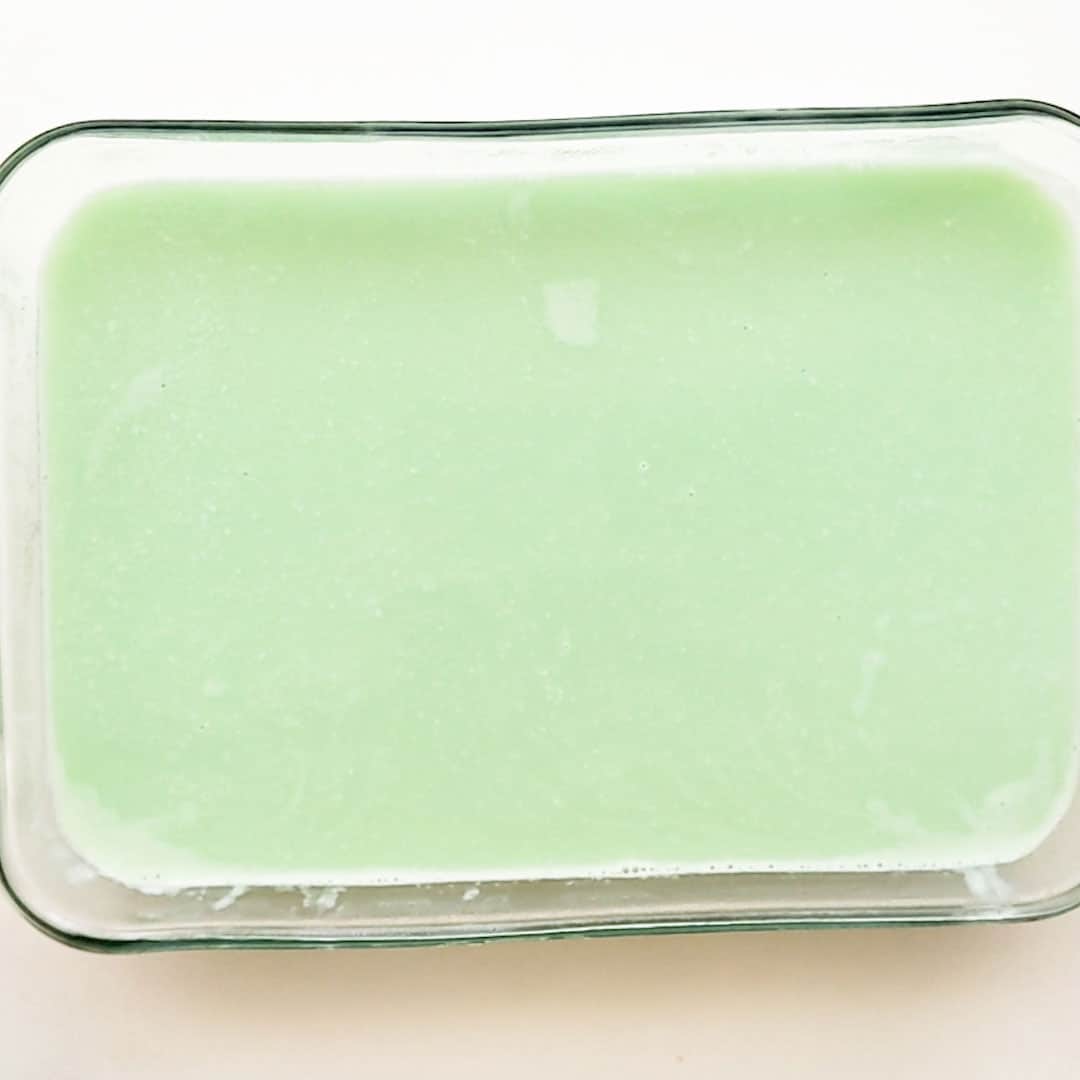
- Pour the mixture out into a large glass dish (or jelly moulds, if using). Skim any bubbles off the surface with a spoon for a smooth top finish.
- Allow the jelly cool on your kitchen bench for an hour or so. Then store in the fridge until you’re ready to serve. Once set, cut the jelly into shapes and serve.
Wandercook’s Tips
- Whisk It – Use a whisk to help dissolve the agar agar and sugar and avoid it going lumpy.
- Check the Agar Packet! – Always check the label on the agar agar packet to make sure it’s 100% pure and doesn’t include extra colour, flavour or sugar. This way you can control the sweetness as well as the colour.
FAQs
There could be a couple of reasons why your jelly doesn’t set:
– Your agar agar powder hadn’t completely dissolved. Make sure the water is hot enough, as the powder won’t dissolve in cold water.
– You used citrus-based flavourings. These can interfere with the jelly setting, so it’s best to avoid flavourings or juices such as lemon, lime or pineapple.
It will keep in the fridge for up to a week.
Agar agar is plant based, deriving from various types of red algae / seaweed.
Variations
- Up the Intensity – Add more sugar or salt for extra deliciousness.
- Tweak the Flavour – Add a few drops of essence such as vanilla or rose water, or food dyes for bright colours. You could even flavour it with instant coffee to make coffee jelly.
- Get Creative – Use cookie cutters or silicone jelly moulds for cute shapes like stars or flowers.
- Make it a Full Dessert – Serve with fresh or canned fruit, fruit pulp or syrup, whipped cream, coconut cream or ice cream for extra deliciousness. Or why not slice it up into super thin strips and use in Chè Ba Màu – Vietnamese Three Colour Dessert!
- Party Starter – If serving at a party, why not make some condensed milk coconut balls to have alongside them?
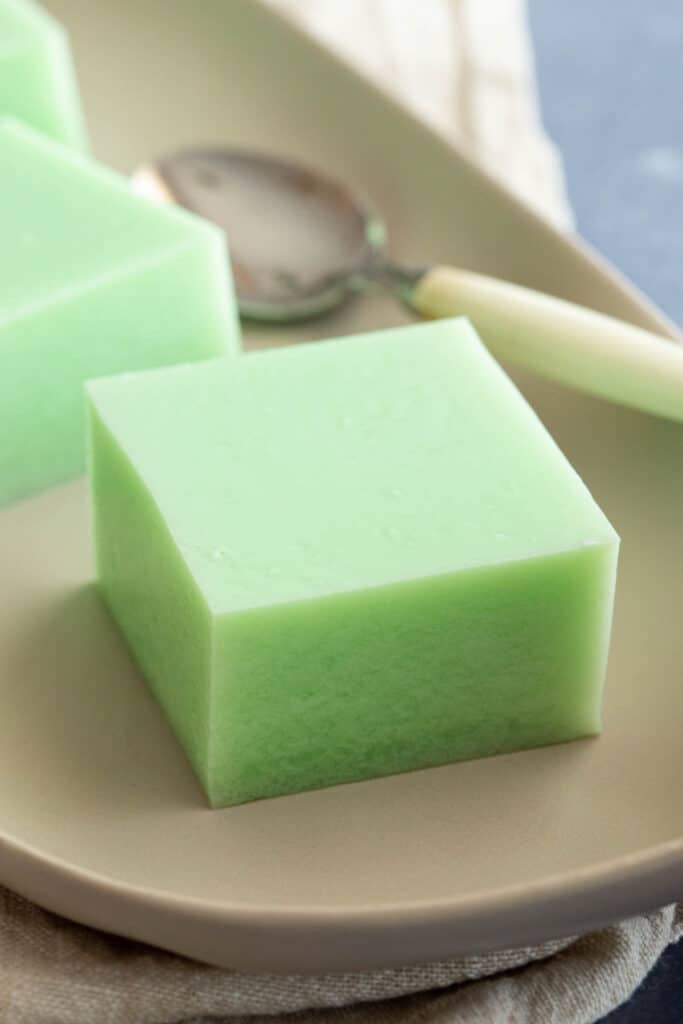
More satisfying Asian desserts featuring pandan and coconut:
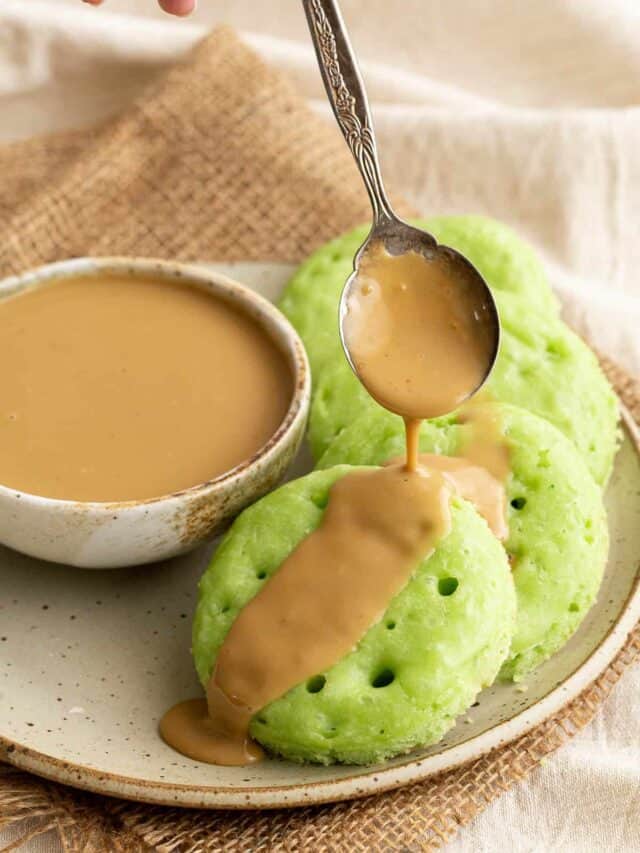
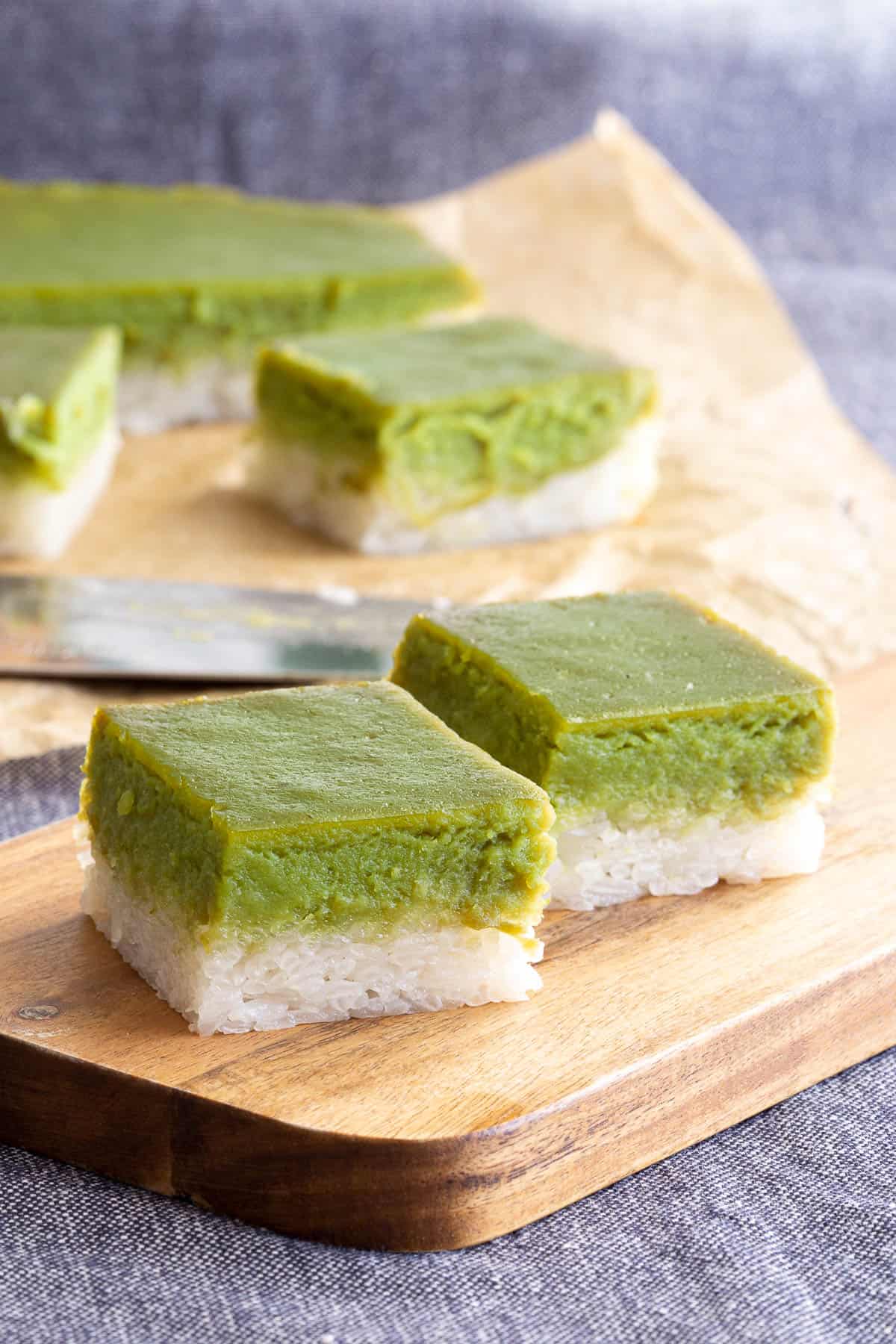
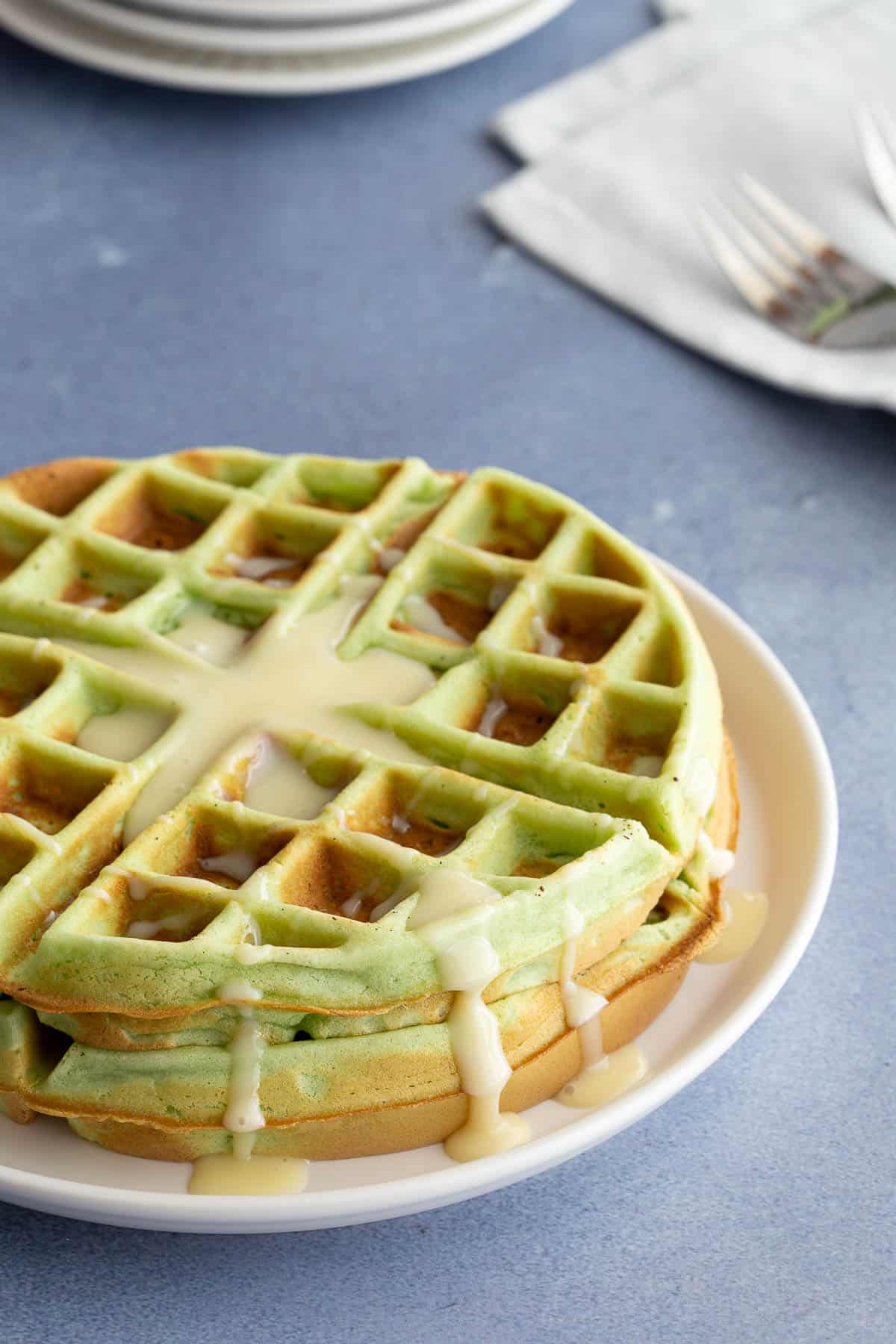
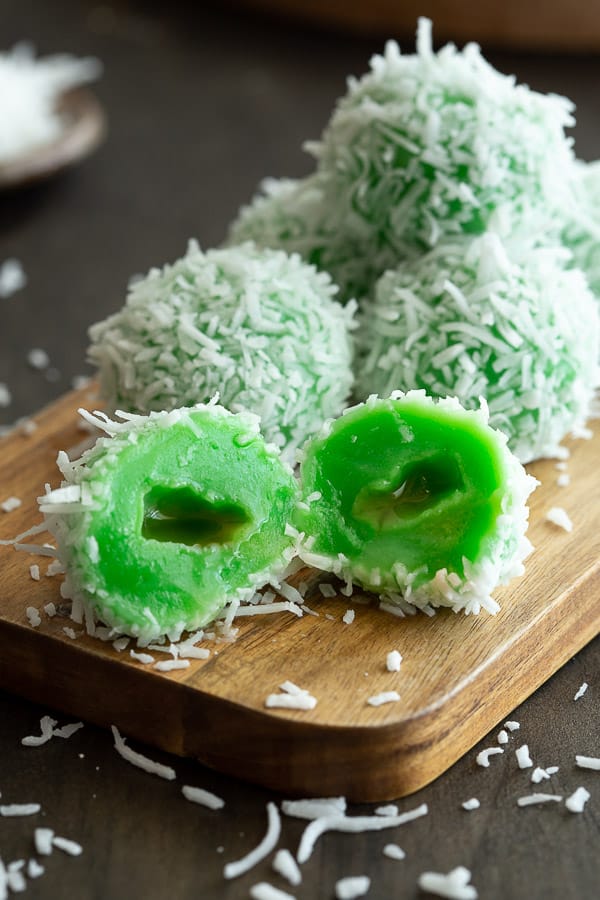
★ Did you make this recipe? Please leave a comment and a star rating below!
Equipment
Ingredients
- 400 ml coconut milk 1 can / 13.5 oz
- 1 l water 33.8 fl oz
- 14 g agar agar 2 tbsp / 0.5 oz
- 150 g sugar 5.3 oz
- 1/2 tsp salt
- 1 tsp pandan flavouring sub vanilla essence
Instructions
- Heat the water in a large saucepan over medium heat until small bubbles start to form. Add the agar agar and give it a swirl to mix through and dissolve.1 l water, 14 g agar agar
- Slowly pour in half the coconut milk and stir. Gently bring to the boil and keep stirring. Then slowly add your remaining coconut milk.400 ml coconut milk
- Next, add in the sugar, salt and pandan flavouring. Taste the mixture, but be careful not to burn your tongue! If it's not sweet enough, you can add more sugar, an extra sprinkle of salt or pandan essence until you're happy with the flavour.150 g sugar, 1/2 tsp salt, 1 tsp pandan flavouring
- Cook and stir for a few more minutes, then remove from the heat.
- Pour the mixture out into a large glass dish (or jelly moulds, if using). Skim any bubbles off the surface with a spoon for a smooth top finish. Allow the jelly cool on your kitchen bench for an hour or so. Then store in the fridge until you're ready to serve.
- Once set, cut the jelly into shapes and serve.
Video
Recipe Notes
- Agar Agar Powder – Look for it in Asian grocers or online. You can substitute using the same amount of regular jelly/jello powder or powdered gelatin if required – just follow the cooking directions on the packet to make. Remember, you’ll need to set the jelly in the fridge as it won’t set at room temperature. If using agar agar flakes instead of powder, use the conversion ratio of 1 tsp powder to 1 tbsp flakes.
- Setting the Jelly – Make sure the agar agar flakes or power are completely dissolved before adding in the coconut and egg mixture. Avoid citrus-based flavourings or juices such as lemon, lime or pineapple, which are known to prevent the jelly from setting.
- Coconut Milk – We use canned coconut milk with at least 60% coconut extract. Avoid sweetened coconut milk, just use regular plain coconut milk so you are always in control of the sweetness.
- Pandan Flavouring – We use the popular pasta pandan flavouring. It stores well, and is easy to find at Asian supermarkets or online. It’s a surprisingly versatile little ingredient which you can use for other sweet Asian treats like Klepon (Coconut Rice Cakes) and Dadar Gulung (Rolled Pancakes), or even savoury dishes like Thai Pandan Chicken. If you don’t have any pandan flavouring on hand, you can substitute with regular vanilla essence.
- Up the Intensity – Add more sugar or salt for extra deliciousness.
- Tweak the Flavour – Add a few drops of essence such as vanilla or rose water, coffee, or food dyes for bright colours.
- Get Creative – Use cookie cutters or silicone jelly moulds for cute shapes like stars or flowers.
- Make it a Full Dessert – Serve with fresh or canned fruit, fruit pulp or syrup, whipped cream, coconut cream or ice cream for extra deliciousness. Or why not slice it up into super thin strips and use in Chè Ba Màu – Vietnamese Three Colour Dessert!
Nutrition
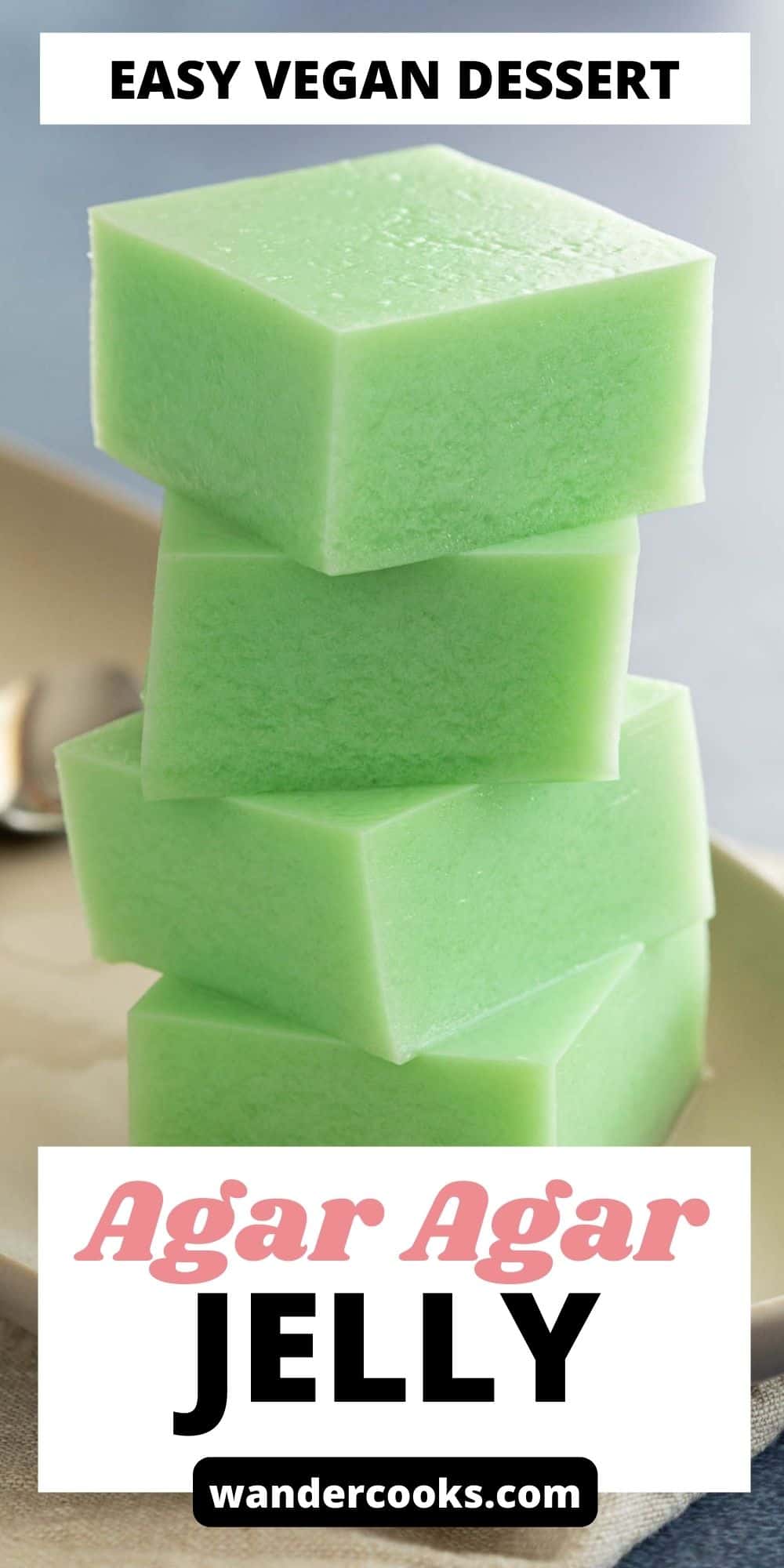

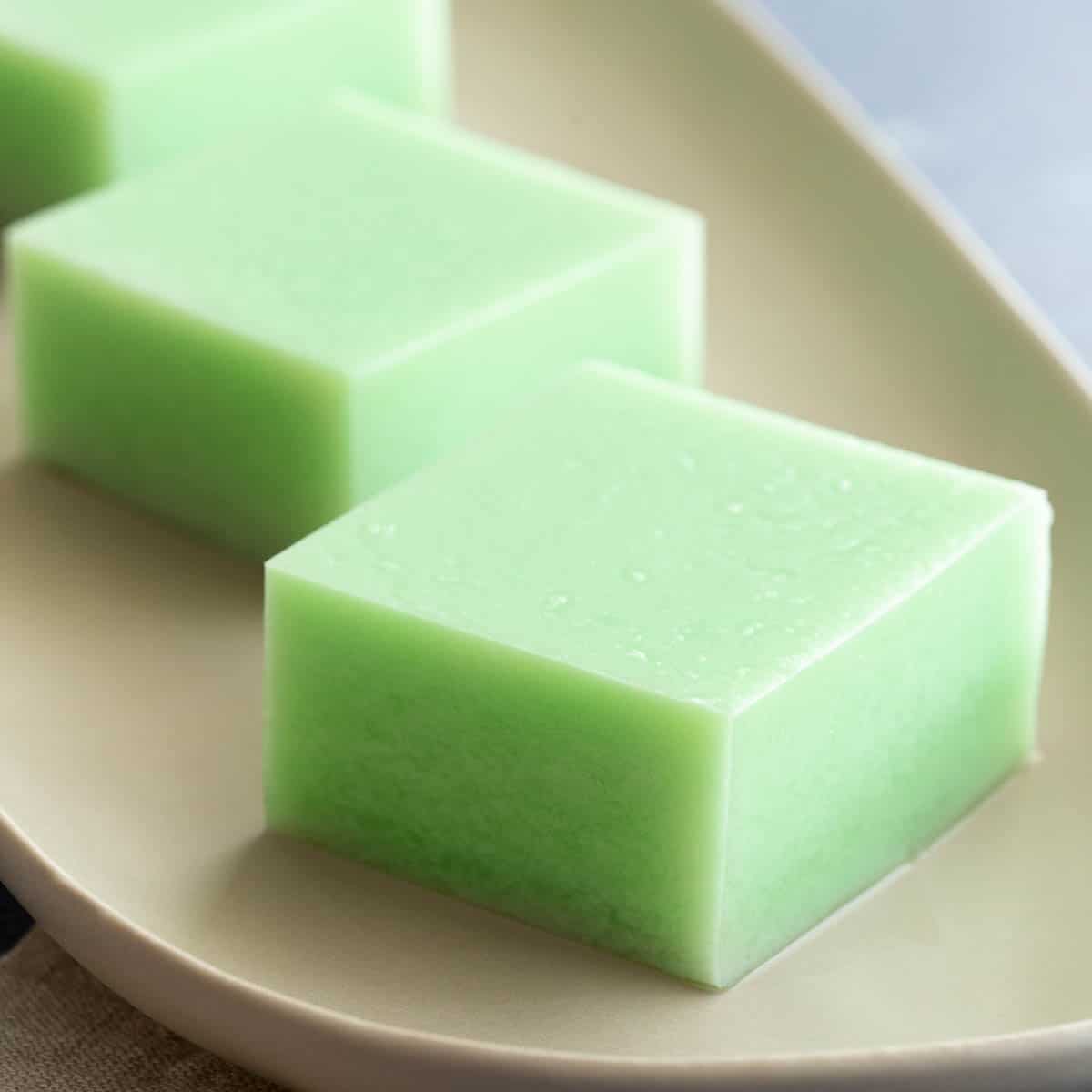


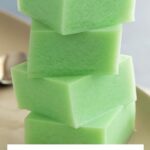
16 Comments
Philo
10/09/2023 at 1:24 pmWhat can I do if it doesn’t set properly?
Wandercooks
11/09/2023 at 9:12 pmHey Philo! You can try reheating to boiling, and seeing if it sets after that. The water needs to be hot enough for the agar agar to set. The other option is to add a little more powder when you reheat to try and really firm it up. If it doesn’t set after that, double check the agar agar is still in date.
Mimi
29/03/2021 at 5:59 pmThis recipe can be made without the egg too for vegetarians. I used to make this without the pandan at home and it turns out great even without the eggs. 😉
Wandercooks
31/03/2021 at 9:59 amOh cool to know Mimi, thanks for sharing. We’ll add this to the variations. 😀
Sharon Chen
23/04/2020 at 11:19 amI haven’t tried cooking an agar agar recipe before. Would definitely try this one 🙂
Wandercooks
23/04/2020 at 11:19 amHave fun Sharon, let us know how you go!
Beth
23/04/2020 at 11:19 amThese are so fun and could be used for some festive holidays like St. Patricks or even Christmas! Great post!
Wandercooks
23/04/2020 at 11:19 amAbsolutely! So versatile, especially because they can stand up to being out of the fridge a little longer than regular jelly.
Veena Azmanov
23/04/2020 at 11:19 amLovely dessert option for a party. Love the color and the flavor of coconut to making this amazing dessert.
Wandercooks
23/04/2020 at 11:19 amThanks Veena, they’d be a great conversation starter for sure.
SHANIKA
23/04/2020 at 11:19 amI’m loving these little Jelly Squares! So perfect for Summer!
Wandercooks
23/04/2020 at 11:19 amTotally! They’d be a great dessert after a summer bbq party! 🙂
Michelle
23/04/2020 at 11:19 amI had heard of agar agar before but never knew where it came from. Hoping I can try using it soon as this just seems sooooo cool!
Wandercooks
23/04/2020 at 11:19 amHaha it is! It’s amazing the texture difference between agar agar and gelatin too. It’s so fun to experiment with.
Madeline Wishart
23/04/2020 at 11:19 amHow many servings does this recipe make?
Wandercooks
23/04/2020 at 11:19 amHey Madeline! It kind of depends how you slice them, but we easily filled two glass dishes with the mixture and ended up with around 20 small slices.